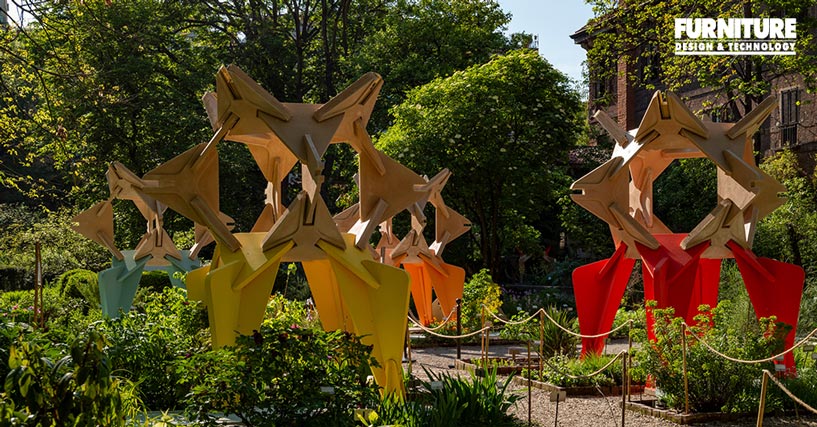
Italian studio Carlo Ratti Associati, along with architect Italo Rota, created a unique modular installation for Milan Design Week using an innovative artificial stone made from waste rice husks. This installation, named SunRice, was displayed in the Brera Botanical Garden and transformed the space into an immersive pathway that highlighted the diverse uses of rice, from food to a novel construction material. Know more about it on FURNITURE DESIGN AND TECHNOLOGY (FDT).
SunRice provided visitors with an experiential journey, illustrating the transformation of rice from a plant into a culinary staple and subsequently into a raw material for architectural applications. The artificial stone used in the installation was developed by Milanese start-up Ricehouse. This geopolymer is an artificial stone formed by chemically reacting silica-rich materials with an alkaline solution, mimicking the natural formation of rocks. Geopolymers offer a more sustainable alternative to concrete, bypassing the need for cement, which is known for its high carbon emissions.
Instead, they utilize industrial waste streams, such as fly ash from coal-fired power plants, as silica sources. The material used in SunRice goes a step further by incorporating an abundant agricultural waste product: the husks removed from rice grains during processing. This rice husk-based polymer can be molded or 3D-printed into various shapes, allowing Ratti and Rota to design a system of triangular modules for the installation. These modules were inspired by the cellular composition of natural materials and the trihedral elements in the metabolic of Hungarian-French architect Yona Friedman.
SunRice was developed for global energy company ENI, in collaboration with Michelin-starred chef Niko Romito. Romito contributed to the sensory experience by creating a rice-based biscuit using herbs grown in the Brera Botanical Garden, offering visitors a fresh perspective on this global staple food. Following Milan Design Week, the components of the installation will be reportedly repurposed as nourishment for the garden, showcasing the sustainability and versatility of the material.
Image credit: Carlo Ratti Associati
Furniture Design India and the magazine FURNITURE DESIGN & TECHNOLOGY (FDT magazine) are from the trusted 22-year-old media house of SURFACES REPORTER and PLY REPORTER.
FDT is a B2B monthly bilingual magazine from India that shares the pulse of the furniture business in India and connects the manufacturers, OEMS, product designers, architects, showrooms, designers and dealers.
Read More© 2025 Furniture Design and Technologies.. All Rights Reserved. Developed by eyeQ Advertising